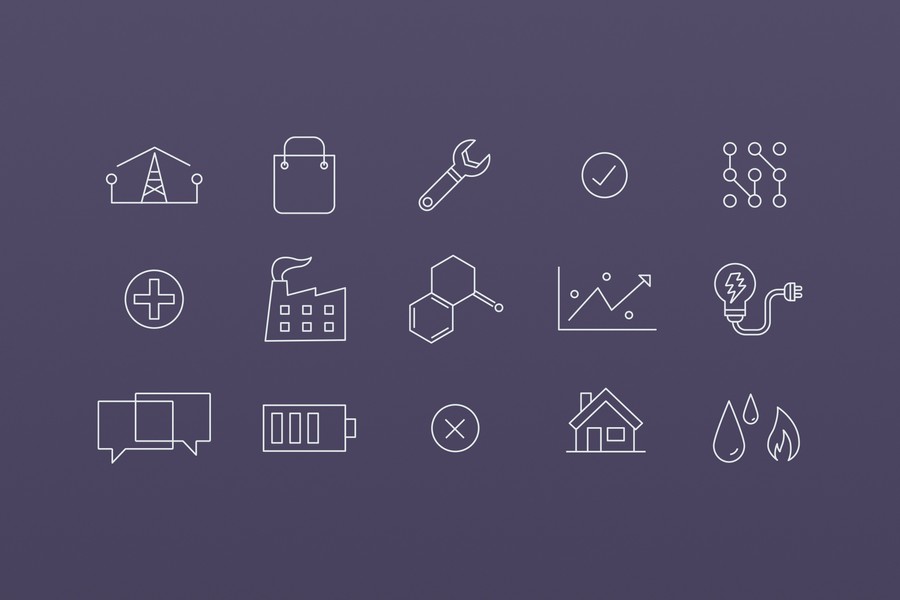Experian
Price £19.45
52 week high-low £19.63 – £14.5 Net Yield 1.8%
Hist/Pros PER 27.2 –24.5
Equity Market Cap £17,472m
Industrials
Nadia Ridout-Jamieson, Chief Communications Officer
In previous editions of Prospects we’ve described Experian as an information services firm known for providing consumers and businesses with credit reports on a mostly transactional basis. That is beginning to change; they now see themselves as primarily a data science company selling software on license agreements, which are more recurring in nature.
The business splits itself by both region and business line for reporting purposes. However we like to consider their revenues as either business-to-business (B2B) or business-to-consumer (B2C) in nature.
In their B2B division, Experian aim to utilise their proprietary data and analytics to improve the speed, accuracy and efficiency of credit related decisions for businesses. An example of this might be their ‘Text for Credit’ tool targeted at retailers or auto loan finance companies. Here, Experian have developed a product that allows them to identify a consumer based on their mobile phone number and immediately provide a pre-approved credit decision to the customers’ mobile device without the need to fill out a lengthy and cumbersome credit application.
Their B2C division however offers a different prospect and remains something of a turnaround story. As their historic business model to provide credit reports to consumers has been disrupted by free equivalents, management have looked to reposition the business. They now look to sign up customers using free credit reports and to up-sell software products on the back of this. As an example, they have developed Identity Works in the US; an identity-theft product which monitors the internet for illegal or fraudulent use of the customers identity.
Organic growth across the two divisions remains a tale of two halves. The upside therefore is that the B2C repositioning finds its feet, the downside is that recent investment into the B2B loses steam.
Nestlé
Price CHF 81.28
52 week high-low CHF 86.4 – CHF 72.92 Net Yield 2.9%
Hist/Pros PER 30.3 –20.8
Equity Market Cap CHF247,429m
Consumer Goods
Alex Howson, IR Officer
Nestlé is responsible for a vast product line which includes dairy products, bottled water, coffee, cereals, baby food, pet food and their classic confectionery portfolio. In January 2017 Ulf Mark Schneider was appointed CEO of Nestlé, the first outsider to take the helm since 1922. An interesting choice, given his background is almost entirely in pharmaceuticals and healthcare.
We are told that in the past year the business has undergone considerable change. After travelling around each of the business units separately, Schneider has made it clear (by altering remuneration for senior managers) that the two areas he is looking to focus on are profit margins and return on invested capital. Cost cutting is another focal point and has involved a head count reduction, as well as descaling offices. They currently have 20 offices in Switzerland and that number will be reduced to seven over the coming months.
In May 2018, Nestlé acquired the rights to sell Starbucks branded coffee in supermarkets for $7.1bn. This has allowed them access to the US which is the largest country for coffee, as well as adding scale to an already advanced network. Their existing Nespresso and Dolce Gusto brands sell at a sizable premium to competition in ‘pods’ and largely dominate this space giving them c.22% of the growing global coffee market.
In confectionery we have seen consumers trading up recently, leaving Nestlé off the pace. Their only premium chocolate brand of note, Cailler, accounts for just over 1% of chocolate sales and has not shown growth for the past five years. Their investor relations team stated that they believe premium brands will outperform standard chocolate over the long term but have no plans to change strategy.
Anecdotally, Kit Kat (Nestlé’s largest chocolate brand) is actually seen as a premium product in Asia selling for between $5 and $20. In the interest of research, we have since tried a variety of Japanese Kit Kats and can report that they are extremely pleasant. Unfortunately, this is a small part of the business and there are no plans to roll it out further afield.
Ocado
Price £9.55
52 week high-low £11.63 – £2.36
Net Yield 0.0%
Hist/Pros PER N/A – N/A
Equity Market Cap £6,319m
Consumer Services
David Shriver, Communications Director
Ocado is the only worldwide provider of end-to-end grocery e-commerce solutions. The company is made up of Ocado Retail - which encompasses Ocado.com - and Ocado Solutions which sells Ocado’s technology to other worldwide retailers.
Ocado’s technology is utilised via its Smart Platform which includes real time control systems and robotics, computer visions systems, machine learning and AI, and delivery routing systems; all of which allows for a highly automated handling process and efficient delivery service. The company employs over 1600 programmers to develop and maintain its platform. This technology has yet to be replicated with ve worldwide grocery retailers partnering with Ocado to use its platform. The standard ‘store pick’ model for grocers’ e-commerce sales, whereby an in-store employee manually fulfils an order, is inefficient and non-scalable. Grocery retailers also have no experience developing such technology, incentivising them further to partner with Ocado.
Amazon is certainly a company which Ocado concede can compete but believe they are a few years behind them. Amazon has an average order size of 1.8 items, whilst Ocado’s is 50 items and across multiple temperature zones. Amazon also has a more manual handling process and Ocado’s 300 patents are likely to stall its advance. Ocado believe that their proof of concept technology, which they have used in their own retail business, puts them at a competitive advantage.
Online penetration of the grocery market is low, accounting for 7-8% of grocery sales. 55% of grocery sales are within bricks and mortar stores, and more than half of which are big basket shops that are more likely to migrate online. Ocado believe there is a strong argument that 20% of grocery sales go online by 2022 and that they will see the direct benefit of this, but given the technology advancement apace in the online grocery market, this is not an assured outcome.
BASIC MATERIALS
Rio Tinto, Croda International
Johnson Matthey
CONSUMER GOODS
Burberry Group
The Kraft Heinz Co
Unilever, Nestlé
CONSUMER SERVICES
Moneysupermarket.com
Ocado Group, Asos
FINANCIALS
Royal Bank Of Scotland Group
Aviva, Standard Chartered
London Stock Exchange Group
Euronext, Mastercard Inc
Visa Inc
HEALTH CARE
GlaxoSmithKline
Dechra Pharmaceuticals
Novo Nordisk
INDUSTRIALS
Smurfit Kappa Group
Experian, Chemring Group
Qinetiq Group, Clipper Logistics
Hill & Smith Holdings
DS Smith, Equiniti Group
Ricardo, Siemens Ag
Worldpay Inc
OIL AND GAS
BP, Exxon Mobil Corp
Royal Dutch Shell
TELECOMMUNICATIONS
Vodafone Group
Verizon Communications Inc
UTILITIES
SSE, Centrica



